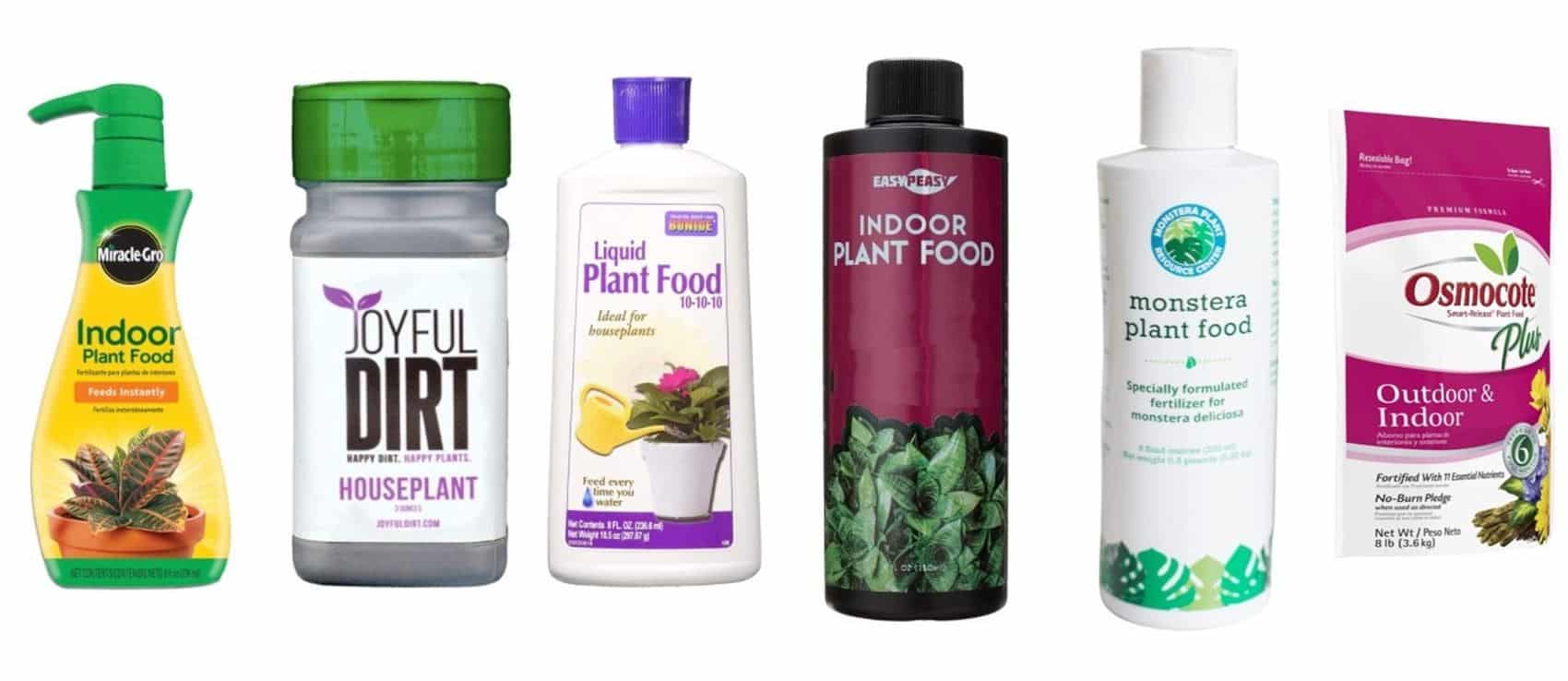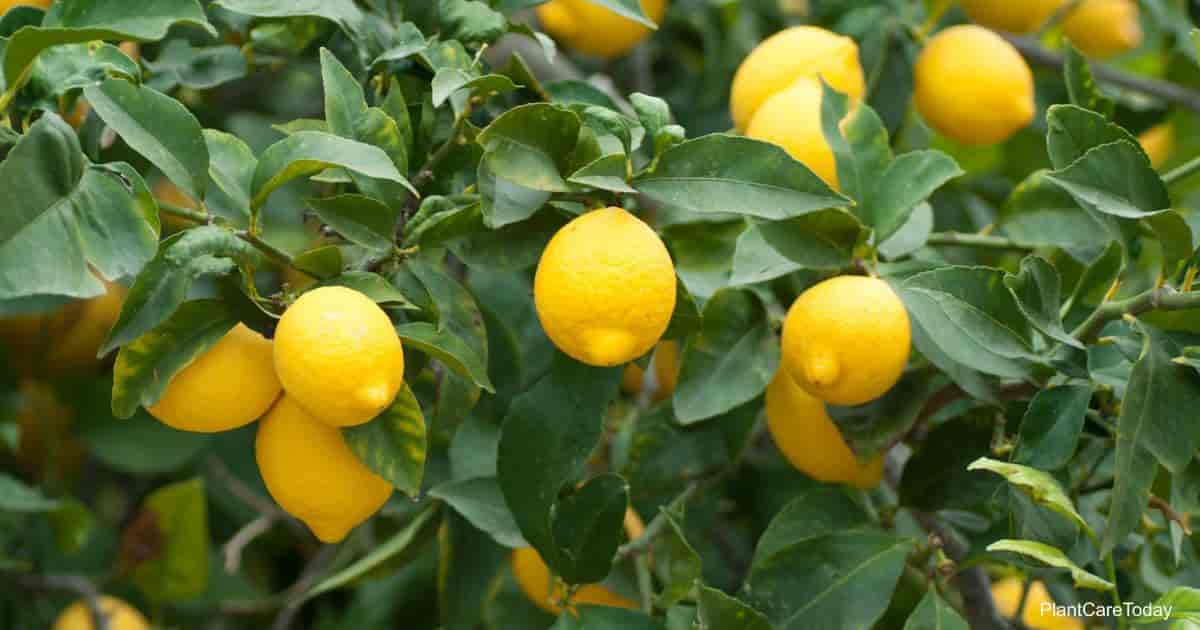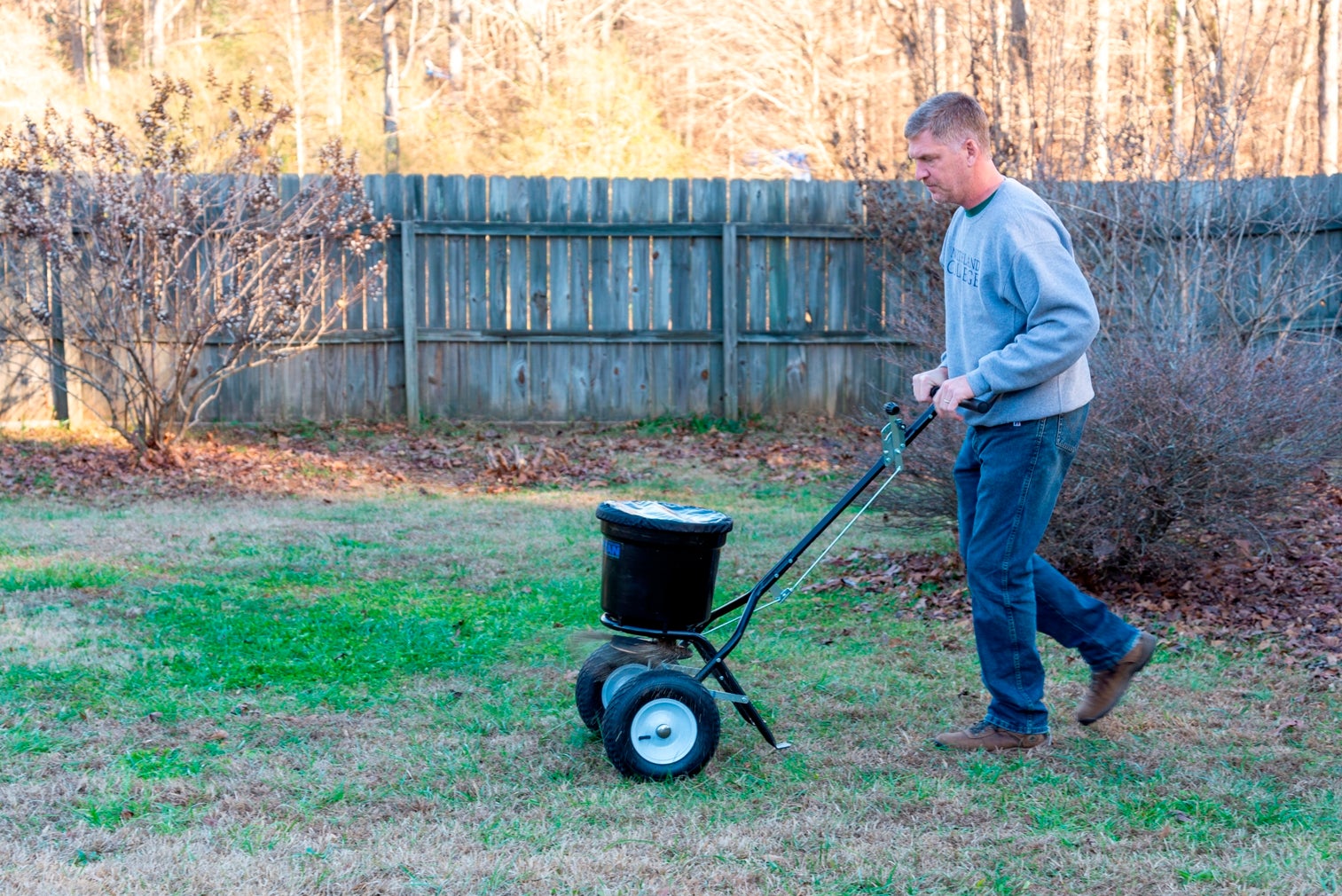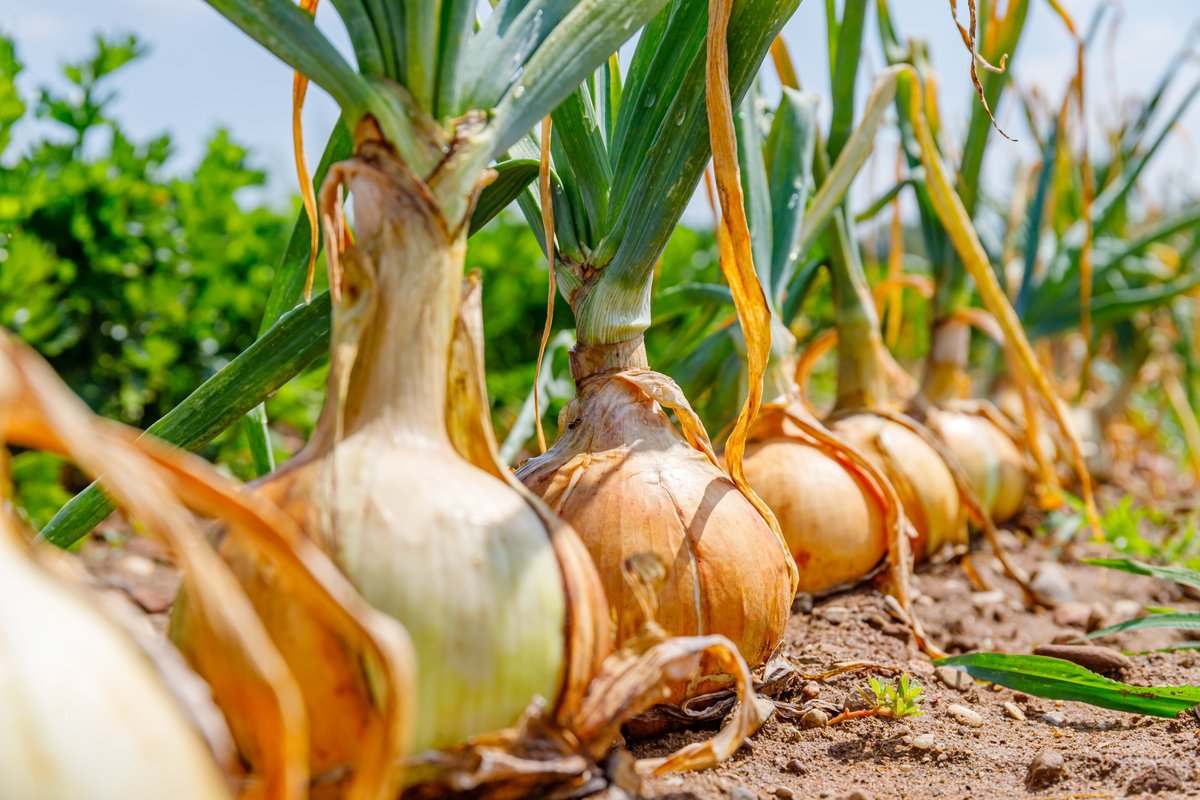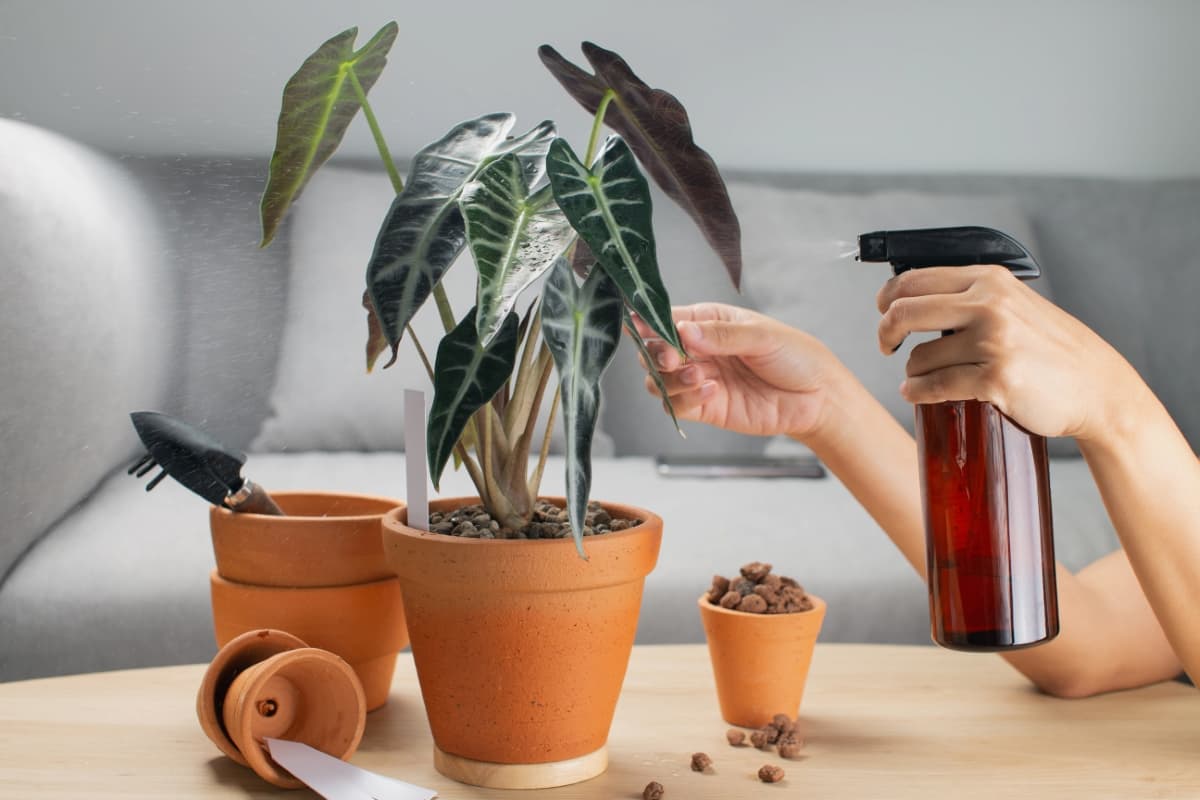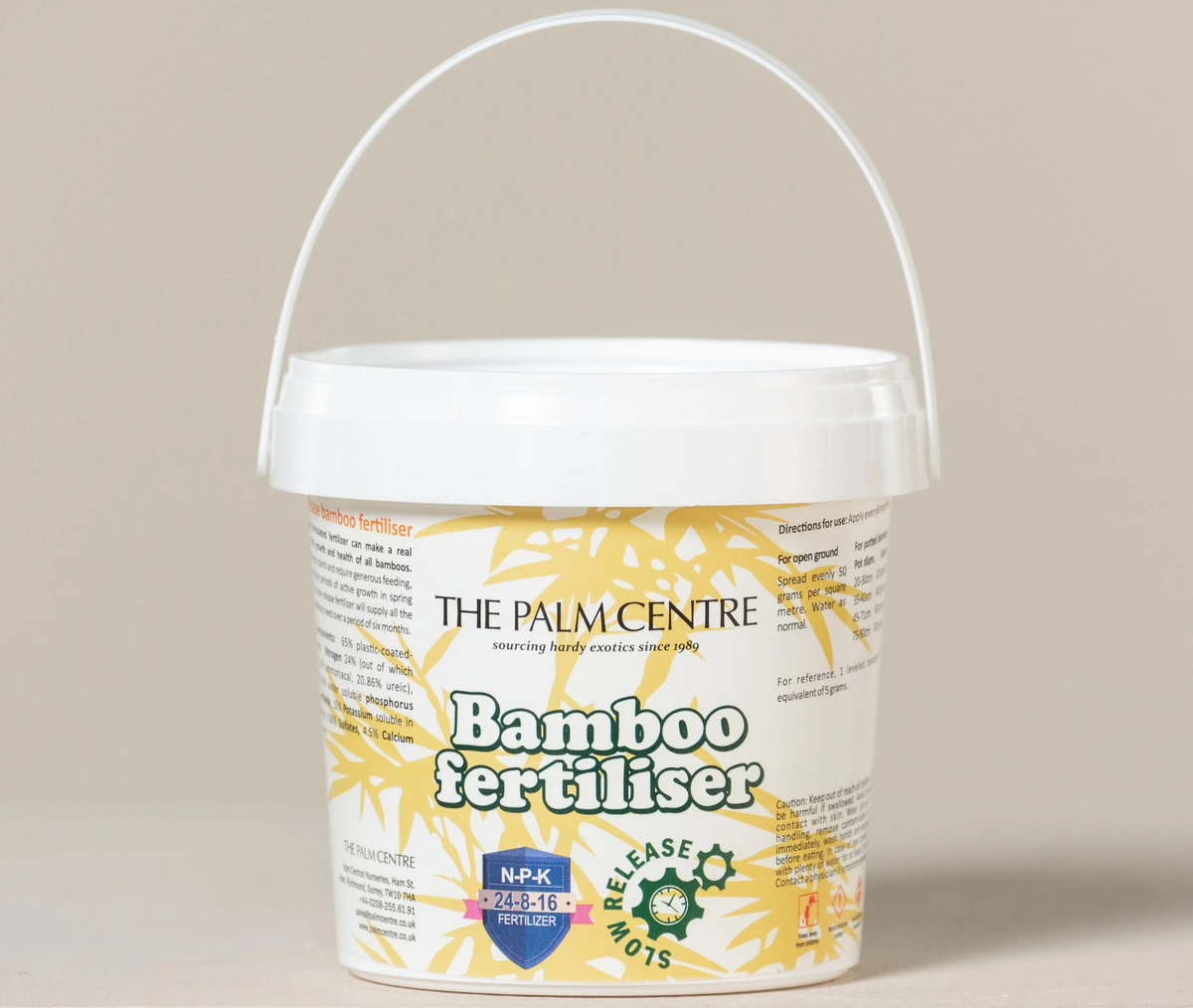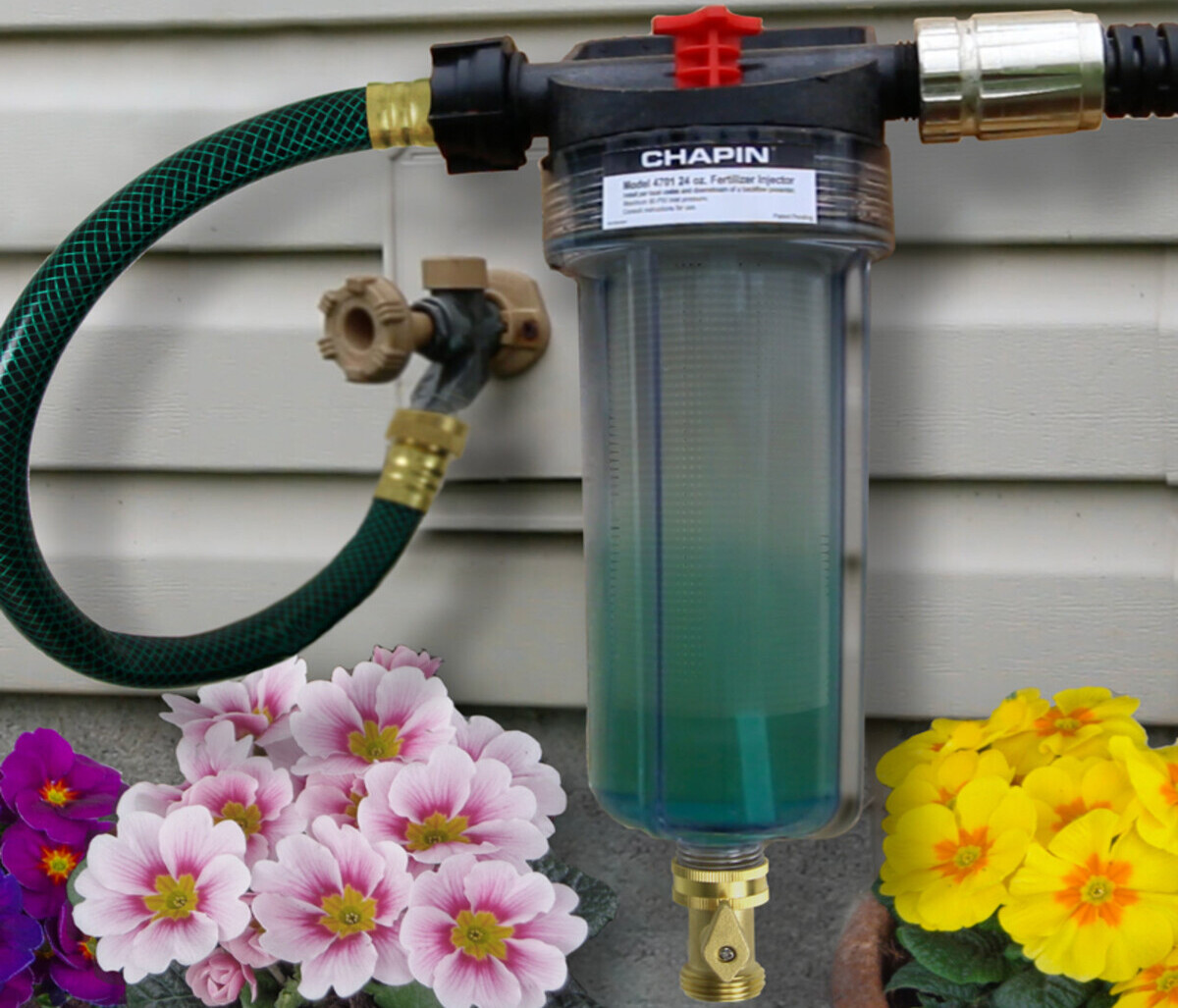Home>Types of Gardening>Ornamental Gardening>Best Fertilizer For Peony
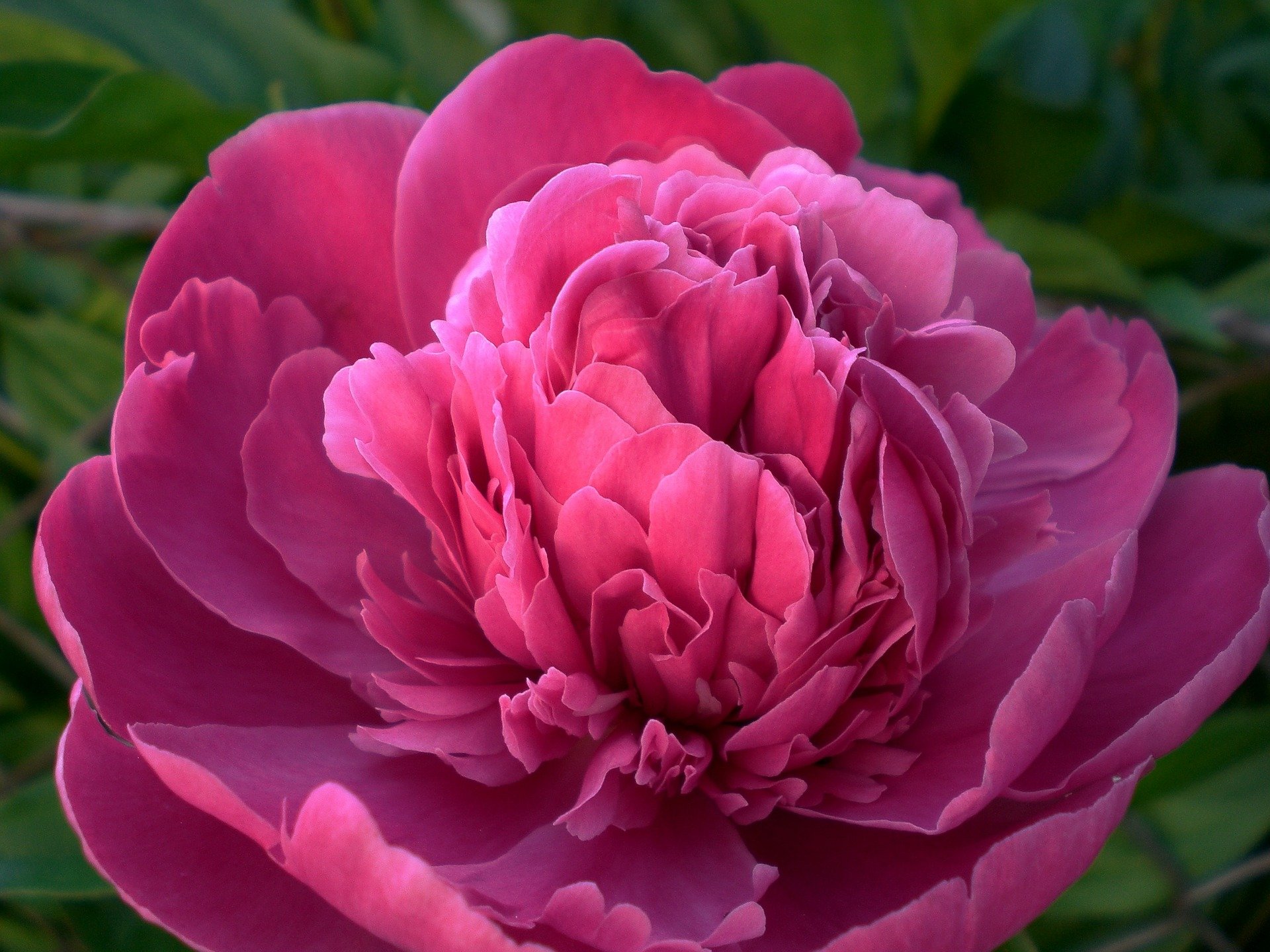

Ornamental Gardening
Best Fertilizer For Peony
Modified: January 22, 2024
Enhance the growth and beauty of your peonies with the right fertilizer. Discover the best fertilizer for peonies and achieve stunning blooms in your ornamental gardening endeavors.
(Many of the links in this article redirect to a specific reviewed product. Your purchase of these products through affiliate links helps to generate commission for Chicagolandgardening.com, at no extra cost. Learn more)
Table of Contents
- Introduction
- Understanding Peonies
- The Importance of Fertilizing Peonies
- Factors to Consider Before Choosing Fertilizers for Peonies
- Different Types of Fertilizers for Peonies
- Organic Fertilizers for Peonies
- Inorganic Fertilizers for Peonies
- Best Fertilizer Practices for Peonies
- Common Mistakes to Avoid when Fertilizing Peonies
- Conclusion
Introduction
Welcome to the world of ornamental gardening, where beauty and creativity intertwine. One of the most beloved and sought-after flowering plants in this realm is the peony. With its stunning blooms and captivating fragrance, peonies bring joy and elegance to any garden.
But like all plants, peonies require care and attention to thrive and reach their full potential. One vital aspect of peony care is fertilization. Providing the right nutrients to your peonies will ensure they stay healthy, vibrant, and produce abundant blooms year after year.
In this article, we will delve into the world of fertilizers for peonies, exploring the different types and best practices for application. Whether you’re a seasoned gardener or a beginner, this guide will equip you with the knowledge necessary to nourish your peonies and enhance their beauty.
Before we dive into the specifics of fertilizing peonies, let’s take a moment to understand these remarkable flowers and why they are revered by gardeners worldwide.
Understanding Peonies
Peonies, scientifically known as Paeonia, are herbaceous perennial plants that belong to the Paeoniaceae family. These stunning flowers have been cultivated for centuries and are native to Asia, Europe, and Western North America. They are known for their large, showy blooms that come in a wide range of colors, including white, pink, red, and even yellow.
Peonies are prized for their beauty and fragrance, making them a popular choice for ornamental gardens and flower arrangements. They typically bloom in late spring or early summer and can live for several decades if properly cared for.
There are three main types of peonies: herbaceous, tree, and intersectional. Herbaceous peonies are the most common and widely grown variety. They have soft stems that die back to the ground during the winter and regrow in the spring. Tree peonies have woody stems that persist year-round and produce larger, more woody flowers. Intersectional peonies, also known as Itoh peonies, are a hybrid of herbaceous and tree peonies, combining the best qualities of both.
Peonies thrive in full sun or light shade and prefer well-drained soil. They require a period of cold dormancy during winter to stimulate healthy growth and abundant blooms. With proper care and maintenance, peonies can become a focal point in any garden and provide years of beauty and enjoyment.
Now that we have a basic understanding of peonies, let’s explore why fertilizing them is crucial for their overall health and vitality.
The Importance of Fertilizing Peonies
Fertilizing peonies plays a crucial role in ensuring their optimal growth and blooming potential. Like all plants, peonies require a balanced intake of nutrients to thrive. Fertilizers provide these essential nutrients, which may be lacking in the soil or depleted over time.
By supplying the right nutrients, fertilizers promote healthy root development, strong stems, and vibrant foliage. They also support the production of abundant, long-lasting blooms. Proper fertilization not only enhances the overall beauty of peonies but also strengthens their resistance to diseases and pests.
Fertilizing peonies is particularly important in areas with nutrient-deficient soils. While peonies are relatively adaptable plants, they perform best in fertile soil that is rich in organic matter. Regular fertilization helps replenish the soil’s nutrients and maintains an optimal growing environment for the plants.
Furthermore, peonies have specific nutritional requirements that vary throughout their growth cycle. Nitrogen, phosphorus, and potassium are the primary macronutrients peonies need in varying amounts. Nitrogen supports healthy leaf and stem growth, phosphorus aids in flower formation and root development, while potassium improves overall plant vigor and disease resistance.
Providing the right balance of these macronutrients, as well as secondary micronutrients like calcium, magnesium, and trace elements, is essential for peonies to thrive. Fertilizers ensure that these nutrients are readily available to the plants, improving their overall health and vitality.
While peonies may benefit from natural sources of nutrients in the soil, supplemental fertilization ensures a consistent and adequate supply. With the right fertilization regimen, peonies can produce larger, more vibrant blooms and display their full potential as ornamental wonders.
Factors to Consider Before Choosing Fertilizers for Peonies
Before selecting a fertilizer for your peonies, there are several important factors to consider. Understanding these factors will help you make an informed decision and provide your peonies with the nutrients they need for optimal growth and blooming. Here are some key considerations:
- Soil Composition: Assess the composition of your soil to determine its nutrient levels and pH. Peonies prefer slightly acidic to neutral soil (pH 6.0-7.0). Conduct a soil test to identify any deficiencies or excesses of nutrients in your soil, as this will guide you in selecting the appropriate fertilizer.
- Nutrient Requirements: Different stages of growth and development have varying nutrient requirements. Consider the specific nutrient needs of your peonies during each stage, such as nitrogen during vegetative growth and phosphorus during flowering. A balanced fertilizer with a ratio suited to your peonies’ needs will promote healthy growth.
- Organic vs. Inorganic: Decide whether you prefer organic or inorganic fertilizers for your peonies. Organic fertilizers, derived from natural sources like compost or manure, provide slow-release nutrients and improve soil structure over time. Inorganic fertilizers, on the other hand, are synthetically derived and provide fast-release nutrients.
- Nutrient Content: Review the nutrient content of the fertilizer you are considering. The three numbers on the fertilizer packaging represent the percentage of nitrogen (N), phosphorus (P), and potassium (K) in that order. For peonies, a balanced fertilizer with a ratio of 10-10-10 or 20-20-20 is generally suitable.
- Application Method: Consider the ease of application and the frequency required for the fertilizer you choose. Some fertilizers may need to be applied multiple times throughout the growing season, while others require a single application. Choose a method that aligns with your gardening preferences and schedule.
- Environmental Impact: Consider the environmental impact of the fertilizer you choose. Some synthetic fertilizers can contribute to water pollution if not used responsibly. Organic fertilizers are generally more environmentally friendly as they promote soil health and minimize the risk of chemical runoff.
By considering these factors, you can make an informed decision when selecting a fertilizer that suits the specific needs of your peonies, promoting their growth, and ensuring their long-term health.
Different Types of Fertilizers for Peonies
There are various types of fertilizers available for peonies, each offering unique benefits and considerations. Understanding these different types will help you choose the best fertilizer for your peonies based on their specific needs. Here are the main categories:
- Organic Fertilizers: Organic fertilizers are derived from natural sources such as compost, manure, or plant-based materials. They release nutrients slowly, providing a steady and sustainable source of nourishment for peonies. Organic fertilizers improve soil structure, enhance microbial activity, and contribute to long-term soil fertility. Examples of organic fertilizers suitable for peonies include well-decomposed compost, aged manure, fish emulsion, and seaweed extract.
- Inorganic Fertilizers: Inorganic or synthetic fertilizers are manufactured using chemical compounds. They provide fast-release nutrients and are readily available to plants. Inorganic fertilizers are typically higher in nutrient content and can quickly address nutrient deficiencies. They come in a variety of formulations, including granular, liquid, or soluble powders. When using inorganic fertilizers, it’s important to follow application instructions carefully to prevent over-fertilization, which can lead to nutrient imbalances or plant damage.
- Slow-Release Fertilizers: Slow-release fertilizers are designed to provide a controlled release of nutrients over an extended period. They deliver small amounts of nutrients consistently, reducing the risk of over-fertilization and minimizing nutrient leaching. Slow-release fertilizers are available in granular or pellet form and are an excellent choice for gardeners looking for a low-maintenance fertilization approach.
- Specialty Fertilizers: Specialty fertilizers are formulated to cater to specific needs or growth stages of peonies. They may contain additional micronutrients, organic additives, or targeted nutrient ratios to promote specific aspects of peony growth, such as flowering or disease resistance. Specialty fertilizers can be beneficial in certain situations, but it is important to understand the specific requirements of your peonies before choosing a specialized product.
When selecting a fertilizer for your peonies, consider factors such as nutrient content, application method, and your gardening preferences. Remember to follow the instructions on the fertilizer packaging for proper application and dosage.
With the right type of fertilizer, you can provide your peonies with the necessary nutrients to support healthy growth, vibrant blooms, and overall plant vigor.
Organic Fertilizers for Peonies
Organic fertilizers are an excellent choice for peonies as they provide a natural and sustainable source of nutrients. Derived from organic materials, these fertilizers enrich the soil and promote long-term plant health. Here are some popular organic fertilizers suitable for peonies:
- Compost: Compost is a valuable organic fertilizer made from decomposed plant matter, such as leaves, kitchen scraps, and yard waste. It is rich in nutrients, improves soil structure, and enhances moisture retention. Apply a layer of well-decomposed compost around the base of your peonies in early spring to provide slow-release nutrients throughout the growing season.
- Aged Manure: Aged manure, such as cow, horse, or chicken manure, is an excellent organic fertilizer that adds nutrients and organic matter to the soil. Make sure the manure has been properly composted or aged to avoid burning the plants with excessive nitrogen. Apply a thin layer of aged manure around the base of your peonies in early spring, ensuring it does not come into direct contact with the stems.
- Fish Emulsion: Fish emulsion is a liquid organic fertilizer made from decomposed fish waste. It is a nutrient-rich source of nitrogen, phosphorus, and micronutrients. Dilute fish emulsion according to the package instructions and apply it as a foliar spray or incorporate it into the soil around the peonies. This fertilizer provides a quick boost of nutrients, particularly beneficial during the active growth stage.
- Seaweed Extract: Seaweed extract is an organic fertilizer derived from seaweed or kelp. It is packed with essential nutrients, trace elements, and plant growth hormones that promote overall plant health and stimulate root development. Dilute seaweed extract in water and use it as a foliar spray or soil drench during the growing season. The natural growth stimulants in seaweed extract are particularly beneficial for improving flower bud formation and enhancing bloom size.
- Bone Meal: Bone meal is a slow-release organic fertilizer made from finely ground animal bones. Rich in phosphorus, it helps promote strong root development and abundant blooms. Before planting your peonies, mix bone meal into the soil at the recommended rate. This will ensure a steady supply of phosphorus throughout the plant’s growth cycle.
Organic fertilizers not only provide essential nutrients but also improve soil fertility, enhance microbial activity, and promote a healthy ecosystem for your peonies. Incorporating organic fertilizers in your peony care routine will result in vibrant blooms, strong plants, and a thriving garden.
Inorganic Fertilizers for Peonies
Inorganic fertilizers, also known as synthetic or chemical fertilizers, are popular options for providing quick and targeted nutrient supplementation to peonies. They offer a convenient and efficient way to ensure your plants receive the specific nutrients they need for optimal growth and blooming. Here are some commonly used inorganic fertilizers for peonies:
- Nitrogen-Potassium-Phosphorus (NPK) Fertilizers: NPK fertilizers are formulated with specific ratios of nitrogen (N), phosphorus (P), and potassium (K), representing the three primary macronutrients essential for plant growth. Look for a balanced NPK fertilizer with a ratio, such as 10-10-10 or 20-20-20. These fertilizers provide a well-rounded nutrient profile for your peonies, supporting overall growth and development.
- Granular Fertilizers: Granular fertilizers are solid particles that are applied to the soil and slowly release nutrients over time. They are easy to use and provide a gradual, long-lasting nutrient supply. Follow the package instructions for proper application, usually by sprinkling the granules around the base of the plants and then watering them in.
- Liquid Fertilizers: Liquid fertilizers are concentrated solutions that are mixed with water and applied directly to the plants or soil. They offer rapid nutrient absorption, making them ideal for quick boosts of nutrition during the growing season. Liquid fertilizers are available in various formulations, such as soluble powders or liquid concentrates, and can be applied through watering cans or sprayers.
- Soluble Fertilizers: Soluble fertilizers are highly concentrated powders or crystals that dissolve in water. They provide immediate nutrient availability and are commonly used for foliar feeding or soil drenching. Dissolve the recommended amount of fertilizer in water and apply it directly to the foliage or soil around the peonies. Soluble fertilizers are particularly useful for addressing nutrient deficiencies quickly.
- Controlled-Release Fertilizers: Controlled-release fertilizers are designed to deliver nutrients slowly over an extended period. They are often encapsulated in a resin or coated with a polymer that regulates the nutrient release. Controlled-release fertilizers provide a consistent supply of nutrients, reducing the risk of over-fertilization and the need for frequent applications.
Inorganic fertilizers offer precise control over nutrient levels and convenience in application. However, it is crucial to follow the package instructions carefully to prevent over-fertilization, which can damage the plants. Regular monitoring of the soil’s nutrient levels and the overall health of your peonies will help you determine the appropriate frequency and dosage of inorganic fertilizers.
Remember, it is essential to strike a balance between using inorganic fertilizers and maintaining overall soil health. Supplementing with organic matter and practicing proper watering and mulching techniques will promote a well-rounded approach to peony care.
Best Fertilizer Practices for Peonies
To ensure your peonies receive the right nutrients and thrive, it’s essential to follow some best practices when fertilizing them. By implementing these practices, you’ll promote healthy growth, vibrant blooms, and the overall well-being of your peonies. Here are some tips for the best fertilizer practices:
- Timing: Apply fertilizer to peonies in early spring before new growth emerges. This provides them with the necessary nutrients for the upcoming growing season. Avoid fertilizing late in the season, as it may stimulate new growth that can be vulnerable to frost damage.
- Appropriate Dosage: Follow the instructions on the fertilizer packaging for the recommended dosage. Avoid over-fertilizing, as it can lead to nutrient imbalances or plant damage. Remember, it’s always better to under-fertilize than over-fertilize.
- Uniform Application: Spread the fertilizer evenly around the base of the plants, avoiding direct contact with the stems. This ensures that the nutrients are distributed adequately to the entire root zone. Lightly rake or water the fertilizer into the soil after application to help it incorporate into the root zone.
- Watering: Water your peonies thoroughly after fertilizing. This helps to activate the fertilizer and ensures that nutrients reach the root zone. Deep watering is particularly important during periods of extended dryness to prevent the risk of nutrient burn and dehydration.
- Mulching: Apply a layer of organic mulch, such as wood chips or compost, around the base of the peonies after fertilizing. Mulch helps retain moisture, suppresses weeds, and gradually releases nutrients into the soil as it breaks down. Mulching also protects the roots during extreme temperatures.
- Seasonal Application: Consider applying a second round of fertilizer after the peonies have finished blooming. This will replenish the nutrients expended during the flowering stage and support the plant’s recovery. Use a balanced fertilizer with a lower phosphorus content to promote foliage growth rather than flower development.
- Regular Soil Testing: Conduct regular soil tests to monitor the nutrient levels and pH of the soil. Soil tests provide valuable information to adjust your fertilization routine according to the specific needs of your peonies. This helps prevent over- or under-fertilization and ensures that the plants receive the appropriate nutrients.
- Organic Matter: Incorporate organic matter, such as compost or well-rotted manure, into the soil before planting your peonies. Organic matter improves soil structure, retains moisture, and enhances nutrient availability. Additionally, top-dressing with compost annually provides slow-release nutrients and supports long-term soil health.
By following these best fertilizer practices, you’ll provide your peonies with the necessary nutrients for healthy growth and exceptional blooms. Remember that each garden and peony variety may have unique needs, so pay attention to how your plants respond to the fertilizers and adjust your approach accordingly.
Common Mistakes to Avoid when Fertilizing Peonies
Fertilizing peonies is vital for their health and vitality, but it’s essential to do it correctly to avoid any potential issues. Here are some common mistakes to avoid when fertilizing peonies:
- Over-Fertilization: Applying too much fertilizer can have detrimental effects on peonies. It can lead to nutrient imbalances, burning of the roots, and excessive foliage growth at the expense of blooming. Always follow the recommended dosage and avoid the temptation to apply more, thinking it will provide better results.
- Improper Timing: Applying fertilizer at the wrong time can disrupt the natural growth cycle of peonies. Fertilize in early spring before new growth emerges to provide nutrients for the upcoming season. Fertilizing late in the season can stimulate new growth that may not have enough time to mature before winter.
- Direct Contact with Stems: Avoid allowing the fertilizer to come into direct contact with the stems of peonies. This can lead to stem and crown rot, which can be detrimental to the plants. Spread the fertilizer evenly around the base, ensuring there is a buffer zone between the fertilizer and the stems.
- Using the Wrong Fertilizer Ratio: Different stages of growth require varying nutrient ratios. Using a fertilizer that is unbalanced for the particular growth stage can result in poor flowering, weak growth, or nutrient deficiencies. Choose a fertilizer with the appropriate ratio of nitrogen, phosphorus, and potassium according to the specific needs of your peonies at each stage of growth.
- Ignoring Soil pH: Peonies prefer slightly acidic to neutral soil (pH 6.0-7.0). Ignoring soil pH and not adjusting it accordingly can affect nutrient availability to the plants. Conduct a soil test to determine the pH level and amend the soil if necessary to create an optimal growing environment for your peonies.
- Neglecting Soil Health: Fertilizing alone is not sufficient for the long-term health of peonies. Neglecting soil health can lead to nutrient imbalances, poor drainage, and reduced plant vigor. Incorporate organic matter into the soil, maintain proper watering practices, and provide adequate mulching to ensure a healthy growing environment for your peonies.
- Using Chemical Fertilizers Exclusively: While chemical fertilizers have their benefits, relying solely on them can have negative consequences for soil health and ecosystem balance. Incorporating organic fertilizers and practices helps improve soil fertility, promote beneficial microbial activity, and create a more sustainable garden environment.
- Underestimating the Importance of Soil Testing: Regular soil testing is crucial for understanding the nutrient content and pH level of your soil. It helps identify any deficiencies or excesses and enables you to make informed decisions about fertilization. Avoid guessing the nutrient requirements and rely on accurate soil test results to tailor your fertilization approach.
By avoiding these common mistakes and adopting proper fertilization practices, you can promote the health and longevity of your peonies, ensuring they thrive and produce abundant, beautiful blooms.
Conclusion
Fertilizing peonies is essential for maintaining their health, promoting vibrant blooms, and ensuring long-lasting beauty in your garden. By understanding the specific needs of your peonies and choosing the right fertilizers, you can provide them with the necessary nutrients for optimal growth.
When selecting fertilizers, consider factors such as soil composition, nutrient requirements, and your gardening preferences. Whether you opt for organic or inorganic fertilizers, each type offers its own benefits and considerations. Organic fertilizers, such as compost, aged manure, fish emulsion, and seaweed extract, provide slow-release nutrients and improve overall soil health. Inorganic fertilizers, like NPK formulations, granular or liquid options, offer quick and targeted nutrition.
Remember to follow best practices when fertilizing peonies, including proper timing, uniform application, appropriate dosage, and regular watering. Avoid common mistakes such as over-fertilization, direct contact with stems, and neglecting soil health. Conduct soil tests periodically to monitor nutrient levels and pH, and adjust your fertilization routine accordingly.
By following these guidelines, you will provide the nourishment your peonies need to thrive. Their stunning blooms and captivating fragrance will be a testament to your care and attentiveness. So embark on your journey as an ornamental gardener, and enjoy the beauty and elegance that peonies bring to your garden.

